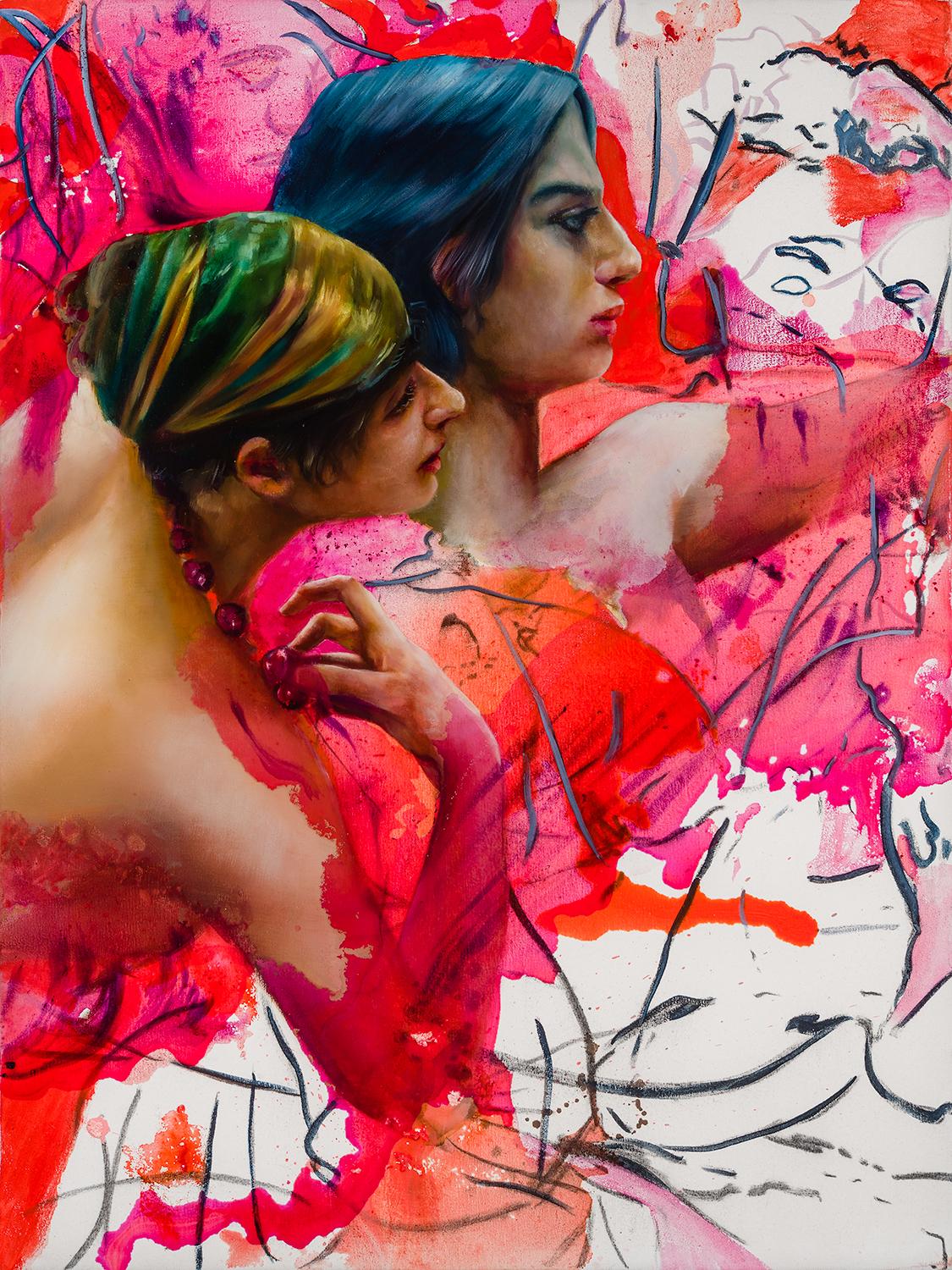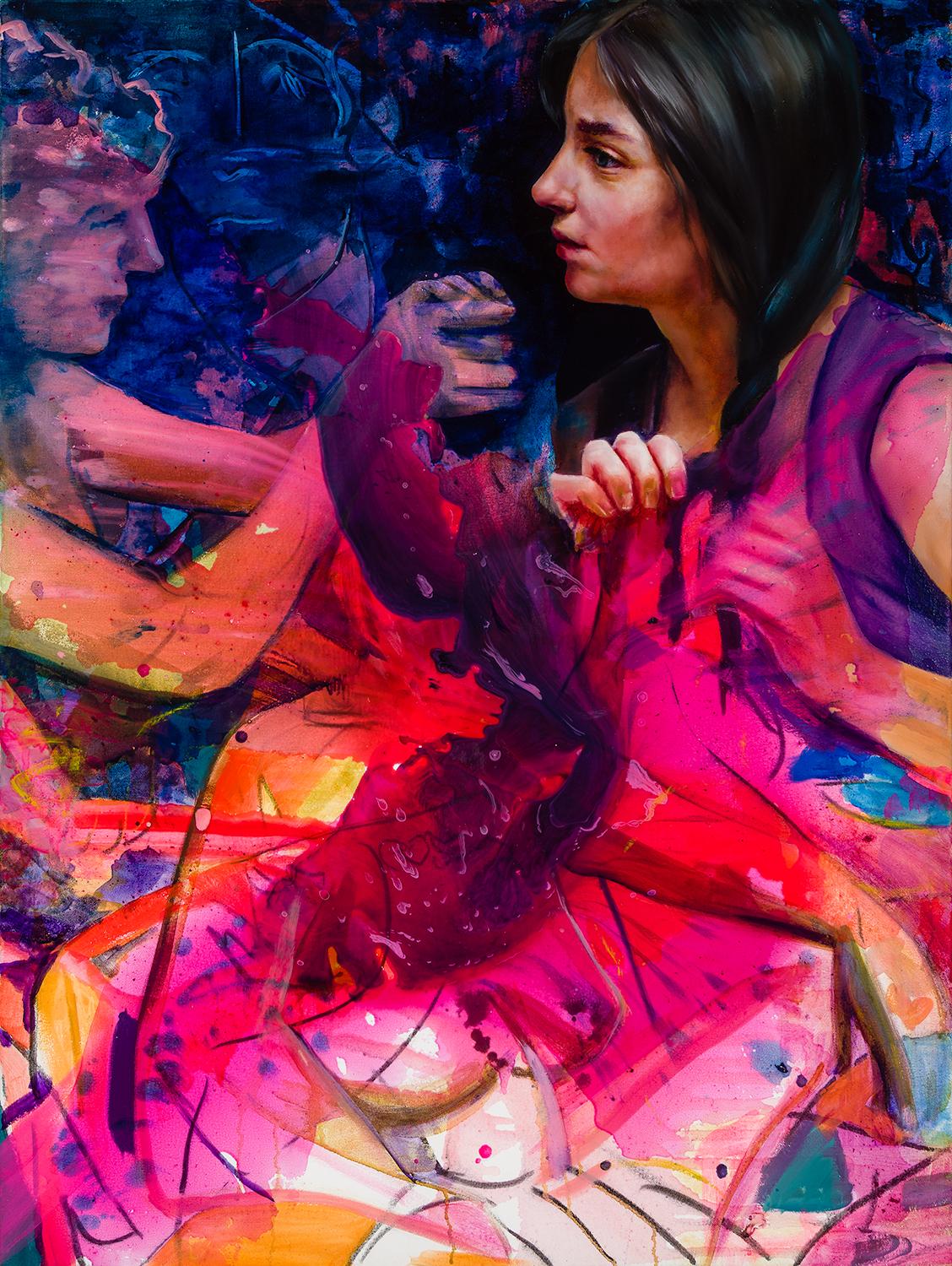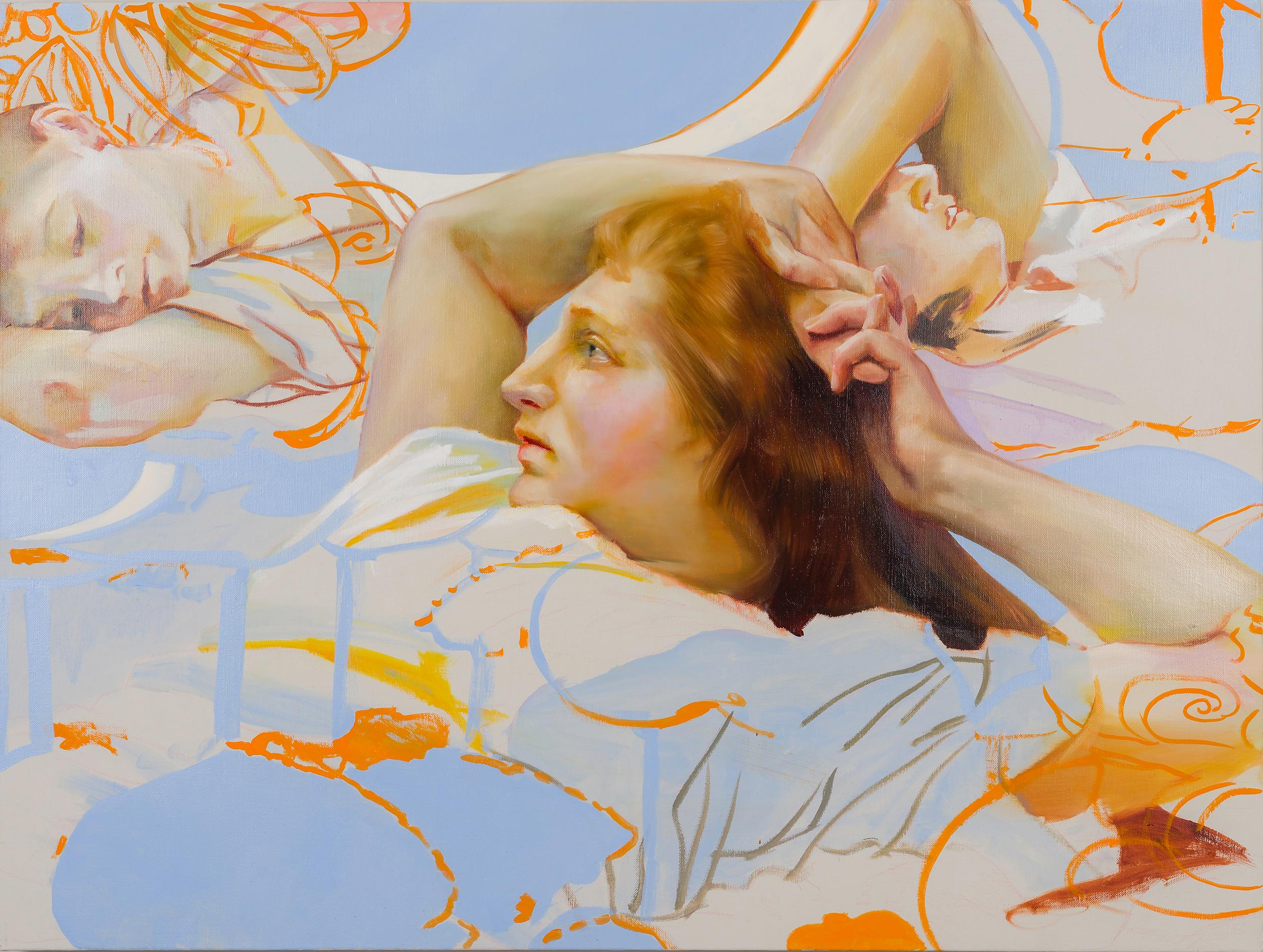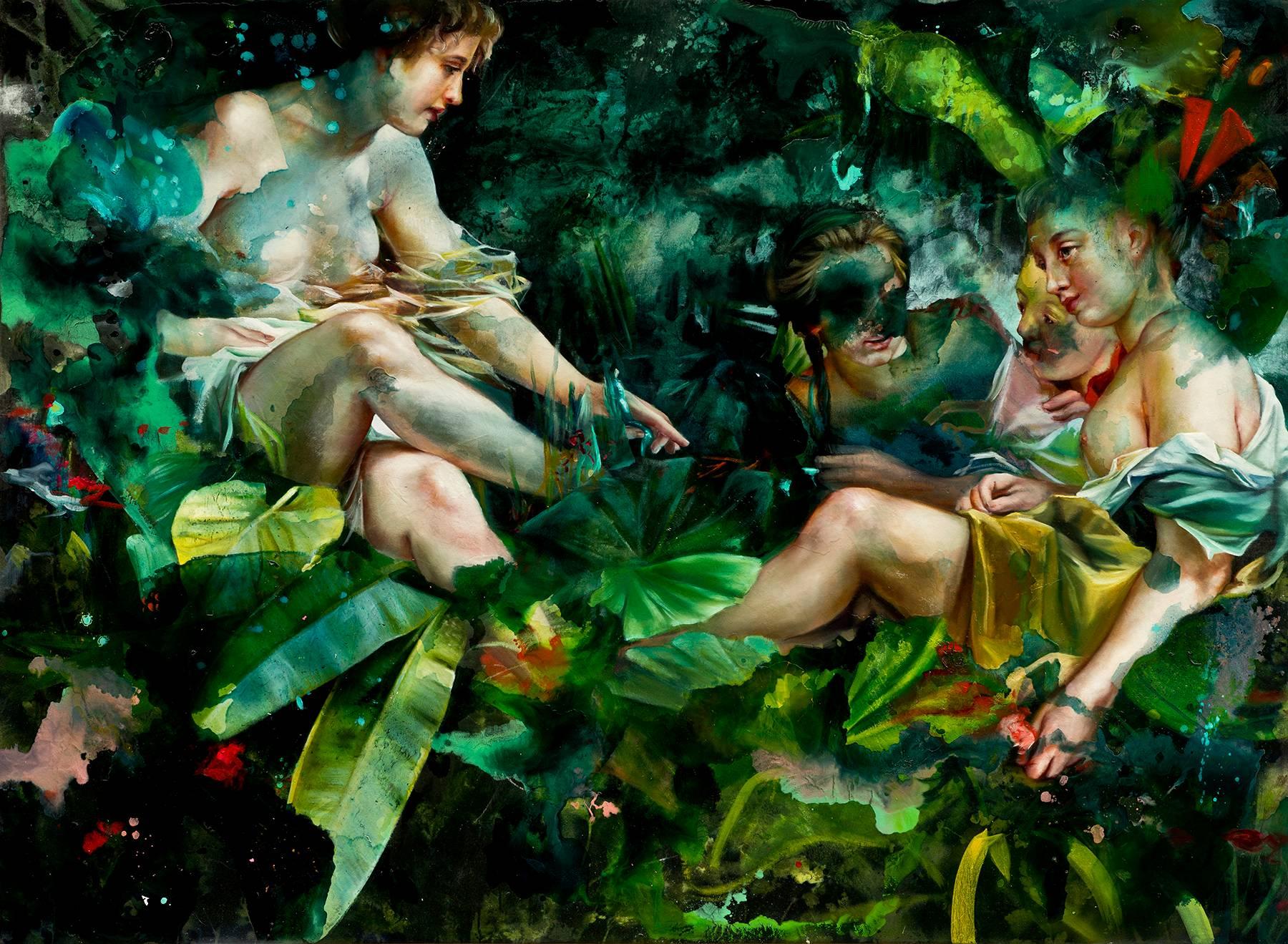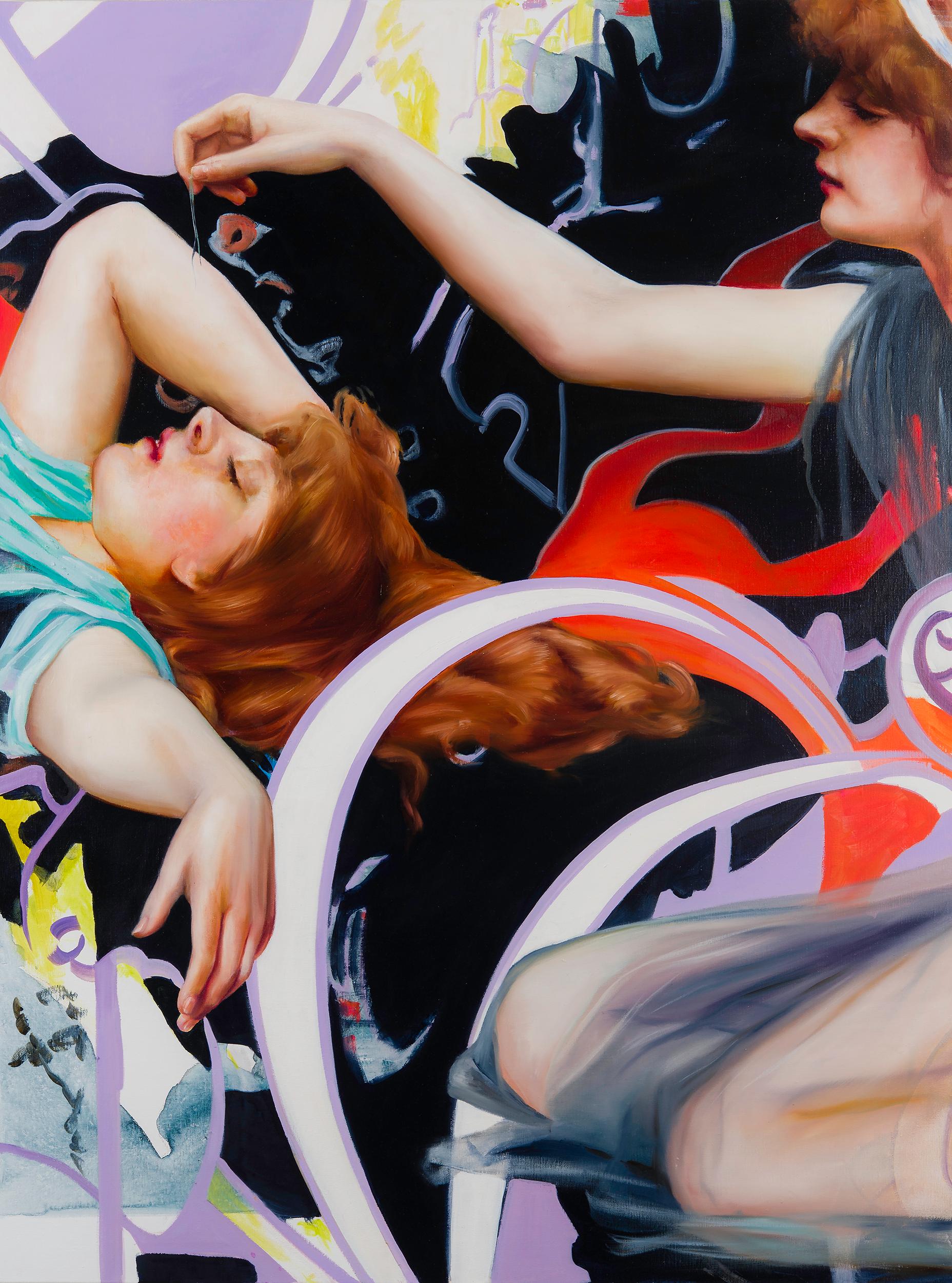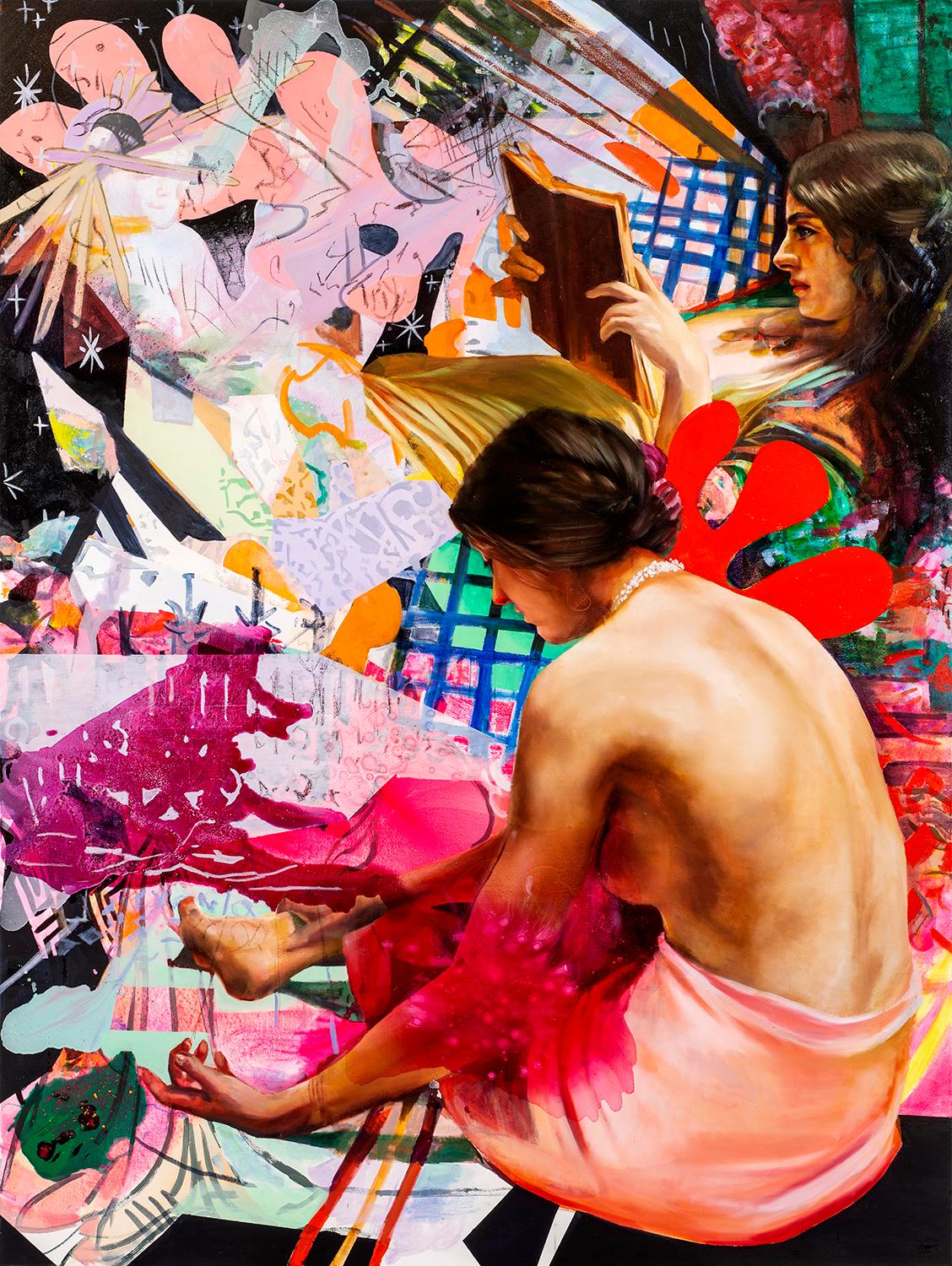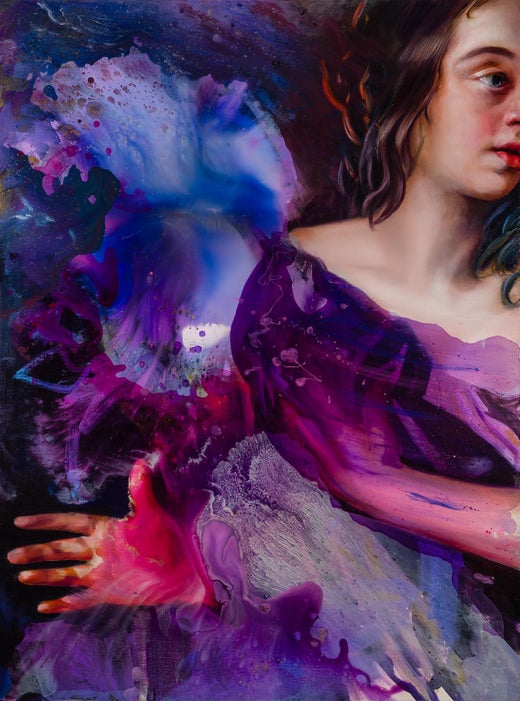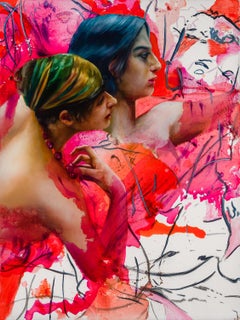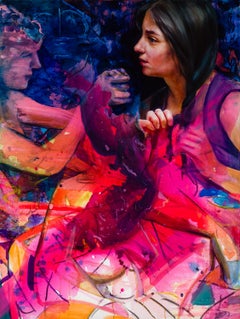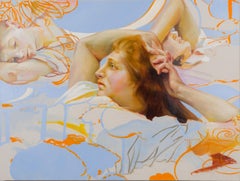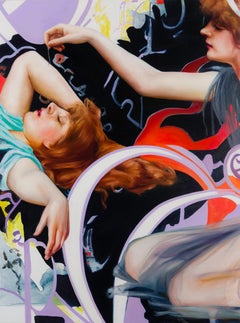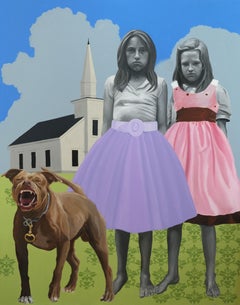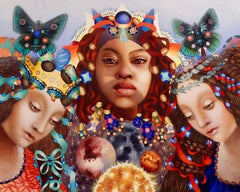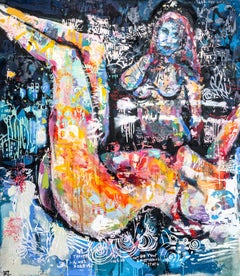Angela FraleighThe Circle is Cast, We Are Between the Worlds2022
2022
About the Item
- Creator:Angela Fraleigh (1976, American)
- Creation Year:2022
- Dimensions:Height: 78 in (198.12 cm)Width: 57 in (144.78 cm)
- More Editions & Sizes:UniquePrice: $32,000
- Medium:
- Period:
- Condition:
- Gallery Location:New York, NY
- Reference Number:Seller: M 10362D.0331stDibs: LU2312626342
Angela Fraleigh
Many of Angela Fraleigh’s haunting and carefully staged tableaux feature women drawn from the annals of Baroque and Rococo “boudoir paintings” — titillating scenes meant to fan the ardor of the viewer. But she puts a contemporary twist on this iconography by giving her characters more agency than was typical of earlier eras.
In Fraleigh’s paintings, which can extend to eight feet, group scenes are typically set against a backdrop of lush painterly effects, ranging from pure abstraction to suggestions of flora and fauna. “I want my paintings to be magical and mesmerizing — seductive, while also inspiring the viewer to ask questions about who they are, where they are, what power they have available and how they might use that power,” the artist says.
Adds Ted Holland, a director at Hirschl & Adler Galleries, in New York, which represents Fraleigh’s work: “She examines the roles and depictions of women in art history — as subject, object, artist and muse — and repositions those often-marginalized figures at the center of her own paintings. The mix of figuration and abstraction allows the female figures to exist without the signifiers of time and location, ultimately giving the figures a new power and context.”
But Fraleigh’s practice also has a quieter, more intimate side. She is an exquisite draftsman who has focused on, among other subjects, the animal kingdom and the intricacies of women’s hair, and some of her smaller paintings have a quiet mystery reminiscent of Gerhard Richter’s tender portraits.
Find original Angela Fraleigh art on 1stDibs.
- ShippingRetrieving quote...Shipping from: New York, NY
- Return Policy
More From This Seller
View All2010s Contemporary Portrait Paintings
Canvas, Charcoal, Oil
2010s Contemporary Portrait Paintings
Canvas, Charcoal, Oil
2010s Contemporary Figurative Paintings
Linen, Oil
2010s Contemporary Figurative Paintings
Linen, Oil
2010s Contemporary Portrait Paintings
Canvas, Acrylic Polymer, Oil, Acrylic
2010s Contemporary Figurative Paintings
Linen, Oil
You May Also Like
21st Century and Contemporary Contemporary Figurative Paintings
Canvas, Ink, Oil, Synthetic Resin
2010s Contemporary Figurative Paintings
Oil
2010s Contemporary Figurative Paintings
Oil, Panel
2010s Contemporary Figurative Paintings
Canvas, Mixed Media, Latex, Acrylic
2010s Contemporary Figurative Paintings
Canvas, Oil
2010s Contemporary Paintings
Oil
Read More
With Works Like ‘Yours Truly,’ Arthur Dove Pioneered Abstract Art in America
New York gallery Hirschl & Adler is exhibiting the bold composition by Dove — who’s hailed as the first American abstract painter — at this year’s Winter Show.
Remarkably, Elizabeth Turk’s Sculptures Highlight the Lost Voices of Extinct Birds
In one of the first live and in-person exhibitions at a Manhattan gallery since last spring, the California-based sculptor gives the lost voices of endangered and extinct birds and animals a magnificent embodied form.
